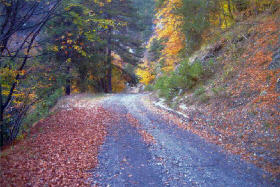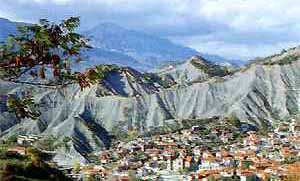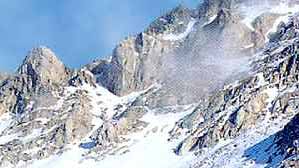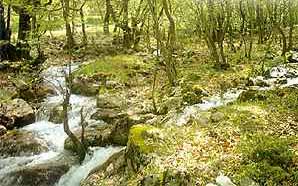|
Macedonian Geography

Generally speaking, as it was mentioned previously, Macedonia is the largest geographic region of Northern Greece, including 34.231 square kilometres with a population which rises to 2.625.681 residents. The region is known for its rich history, engrossed in the depths of fables. According to one of many versions, Macedonia’s name derived from the name of one of its founders, the grandson of Deucalion, whose name was Macedon.
The area is divided into thirteen prefectures: Prefecture of Thessalonica with its capital the city of Thessalonica, Pieria with its capital Katerini, Imathia with its capital Veria, Kozani with its capital Kozani, Grevena with its capital Grevena, Kastoria with its capital the city of Kastoria, Florinis with its capital Florina, Prefecture of Pella with capital the city of Edessa, Kilkis with its capital Kilkis, Chalkidiki with its capital Polygyros, Serres with its capital Serres, Drama with its capital the city of Drama and the Prefecture of Kavala with capital the city of Kavala.
Macedonian Geography:
Ground: A large section of the area is covered by mountains; the total percentage of its extent can be illustrated as follows: 34,7% of its area is flat, 25,9% is hilly and 39,4% mountainous.

Mountains:
The mountain ranges of Macedonia are endings of large mountainous volumes found outside of the Greek borders. The names of some of its mountain ranges are:
Agistron 1.295m, Athos 2.033m, Avgo (Northern Pindos 2.177m, Falakro 2.232m, Grammos 2.520m, Hasia 1.565m, Hortiatis 1.201m, Kaimaktsalan 2.524m, Mayrovouni 1.179m, Menikio 1.963m, Mpelles 1.883m, Olympus, Olympos 2.917m, Orvilos 2.212m, Paggaio 1.956m, Paiko 1.650m, Pieria 2.190m, Syniatsiko (Askion) 2.111m, Varnous 2.334m, Vassilitsa 2.249m, Vermio 2.052m, Vitsi (Vernon) 2.128m, Voio 1.802m,
Vourinos 1.866m
Plains:
Macedonia is enhanced with a multitude of fertile plains. They are extended in the length of her rivers and are separated by her long mountain ranges. The largest flat area is the plain of Hrisoupolis in the Prefecture of Kavala; another one is the plain of Drama in the homonym prefecture, the plain of Strimonas in the Prefecture of Serres. The plains Kilkis, Thessalonica, Giannitsa, Veria, Edessa, Katerini and Chalkidiki can be found in the homonym prefectures.
Plateaus:
The western part of Macedonia is also a most mountainous area with plateaus extending between the mountain ranges. Most plateaus important are the plateau of Florina, Ptolemaida, Kozani, Kastoria and Grevena.

Forests:
The forests in Macedonia cover more than 25% of her surface and they extend on the mountains of Western Macedonia and between the borders with Yugoslavia and Bulgaria. The trees that dominate the area are oaks, beech trees and pine trees.
Mining Wealth:
The subsoil of Macedonia is rich in mining wealth. The main minerals that are found are chromium iron, chromium nickel alloy, and granulite. In smaller quantities exist layers of asbestos and copper.
Climate:
In the Macedonian coastlines the climate is mild and has the characteristics of Mediterranean climate. Advancing into the interior however, which is isolated by the beneficial effect of the Aegean Sea and being surrounded by extended mountain ranges, the climate becomes continental.

Rivers:
The main rivers which irrigate the fertile plains of Macedonia are: River Nestos, which springs in Bulgarian territory and extends 143 km length in Greek territory, River Strimonas which also originates in Bulgaria and extends 104 km length in Greek territory, Aggitis is tributary of Strimonas, Gallikos River which springs from Croatia and has a length of 73 km, Aksios which springs in Yugoslavia and extends to 82 km in Greek territory, Loudias and Aliakmonas Rivers, both springing from Grammos mountain range and extending to 314 km.
Lakes:
A number of lakes can be found in Macedonia: Kerkini Lake which takes its shape from the course of River Strimonas, Doirani Lake which is found in the border between Greece and The FYROM, Lake of Lagkada (Koronia), Volvi Lake, Vegoritis, Lake of Kastoria,Lake Petron, Lake Hemaditis and the Prespes (Small and Big Prespa).
Coasts:
The peninsula of Chalkidiki in Central Macedonia is a well-known seacoast spot, famous for its beaches that lead to three smaller peninsulas, shaping the Gulf of Kassandra and the Gulf of Sigritiko. In Eastern Macedonia the Kavala Gulf can be found with Cape Keramon opposing the island of Thassos.
|